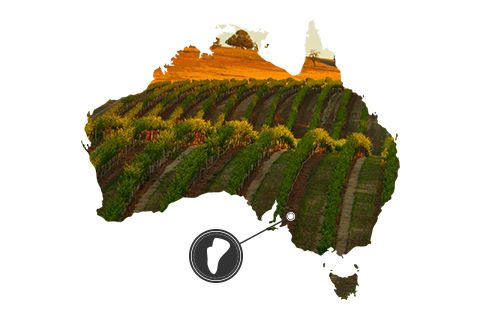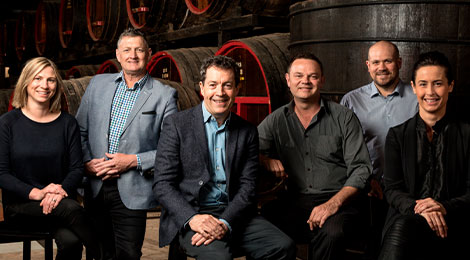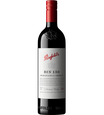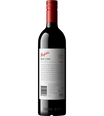Bin 150 Marananga Shiraz 2020
Penfolds
Bin 150 Marananga Shiraz 2020
Penfolds
Bin 150 Marananga Shiraz 2020
- Exclusive pricing and offers
- Shipping included
- Plus more
Overview
Overview
Bin 150 Marananga Shiraz is a sub-regional expression that is unmistakably Penfolds in character. Conceived from the ancient soils of Marananga, which lie very close to the centre of the Barossa Valley floor – slightly to the North-West, where warm dry conditions and rich red soil provide the backbone to some of the region’s best-known wines. Each release delivers a contemporary shiraz alternative, framed by a mix of oaks; French and American, old and new – crafted in the 'Penfolds way'.
| Varietal | Shiraz |
|---|---|
| Vintage | 2020 |
| Country | Australia |
| Region | Multi-Region Blend |
| Volume | 750 mL |
| Closure | Screw Cap |
| Alc/Vol | 14.5% |
| Peak Drinking | 2025 – 2040 |
Awards and Accolades
Awards and Accolades
| 98 Points | Andrew Caillard MW |
| 96 Points | Huon Hooke |
| 96 Points | Erin Larkin, Robert Parker's Wine Advocate |
| 96 Points | Nick Stock, JamesSuckling.com |
| 96 Points | Ken Gargett, The World of Fine Wine |
| 95 Points | David Sly, Decanter Magazine |
| 95 Points | Tony Love |
| 95 Points | Jeni Port |
| 95 Points | Tyson Stelzer |
| Silver | 2022 Barossa Wine Show |
Andrew Caillard MW | The Vintage Journal
"Medium-deep crimson. Intense liquorice, dark chocolate, blackberry aromas with toasty vanilla notes. Classical inky, blackberry, dark plum, dark chocolate flavours, vigorous fine graphite/ al dente tannins, superb roasted chestnut/ vanilla oak complexity and underlying persistent acidity. Finishes cedar firm with a brambly tannin plume. Superb density, richness and claret-like torque. A brilliant year for Bin 150. 12 months in American (24% new), French (23% new) and seasoned oak hogsheads and puncheons. Drink now to 2038. 14.5% alc. 98 Points."
Erin Larkin
"The Bin 150 Marananga Shiraz has always been a dense, concentrated and muscly wine. Then imagine the overlay of a warm and dry vintage (for some context—26 days in a row over 35 degrees Celsius), the second in a string of warm, dry vintages. Yields were drastically down, up to 70% in some places, and the power of the reds in particular are a force to be reckoned with. So here, to 2020 Bin 150 Marananga Shiraz: savory, spicy tannins form a casing around the fruit, the oak supporting from the back. There are notes of dark blackberry, blood plum, Nag Champa (clove tobacco), pink peppercorns and saturated fruit. There's a side of deli meat in there, too. If you can put aside the density and weight of the wine (impressive), the fruit is pure and beautiful. 2020 may have been responsible for brooding and concentrated wines, but I have found much to love in this year. This included. Sensational. 96 Points."
Nick Stock
“Deeply expressive and rich in dark plum and blackberry fruit, as well as iodine and tarry elements, this speaks so clearly to the warm and dry Marananga area of the Barossa Valley. Powerful dark fruit and tarry and savory notes on the palate, with bold and muscular tannins that carry the ripe black-fruit flavors so deep. Some licorice and sarsaparilla to close. Striking as always, this is a very composed Bin 150 with impressive poise. Best from 2026. 96 Points.”
Food Pairing
Food Pairing
Pork
Duck
Veg
Taste Description
Taste Description
Nose
Our Marananga vineyards lie in the heart of the Barossa Valley, typifying everything we love about Barossa shiraz. Such complexity! So many layers to unfurl. A distinctive ferric nose denotes the ancient Marananga ironstone, hundreds of millions of years old. Also derived from this geology, dusty graphite powder and whetstone, asphalt/hydrocarbon. A walk-through Chinatown... roast duck with plum sauce, Hoisin BBQ pork ribs. Notes of exotic spice, star anis, cardamom, pimento, acknowledging French puncheon influence.
Flavours and Palate
As we have come to anticipate, satsuma plums and boysenberries provide a varietal/regional signature. Grippy, ripe and rich tannins anchor a tightly structured frame. Freshly sawn oak. Rye sourdough crust – still hot out of the oven. Toasted pumpkin seeds on grilled haloumi. Sarsaparilla, black cardamom pods and ethereal nutmeg spice.
Viticulture Vintage & Winemaking
Viticulture Vintage & Winemaking

Barossa Valley, South Australia
Just one hour’s drive from South Australia’s capital, Adelaide, lies its gourmet capital (and wine Mecca), Barossa. One of the country’s most beautiful and historic wine regions, Barossa is a magnet for lovers of fine food and wine. Its classic Mediterranean climate, and free-draining red brown soils, makes the region ideal for growing grapes. Barossa produces excellent Shiraz, Cabernet, Grenache, Mourvèdre, Riesling and Semillon.
Vintage Conditions
Marananga experienced the second consecutive year of winter drought. Soil moisture levels were well below average leading into the growing season. Spring was cool and dry, driven by below average minimum and maximum temperatures. The trend of cool and dry weather continued well into November delaying flowering and fruit-set. The 2019 calendar year was the driest on record for the Nuriootpa weather station. Summer was typically hot, the Barossa Valley recorded 26 days over 35°C. Conditions in January and February provided some relief. Average February maximum temperatures were 3°C below average. This, combined with a welcome downpour of rain on 1 February, allowed the grapes to slowly reach full ripeness. The unique soils and aspect of Marananga, along with managed irrigation, ensured the region was able to meet the climate challenge and produce a small crop of high-quality shiraz.

The Penfolds Team
Key to the success of Penfolds has been a lineage of visionary winemakers. There have only ever been four Chief Winemakers at the helm of Penfolds – Max Schubert, Don Ditter, John Duval and Peter Gago, each a custodian of a rich winemaking tradition that goes back for more than 170 years.
Our current Penfolds winemaking team has more than 100 years between them as Penfolds winemakers. They are constantly refining and improving their work, whilst honouring the winemaking techniques of their predecessors.


